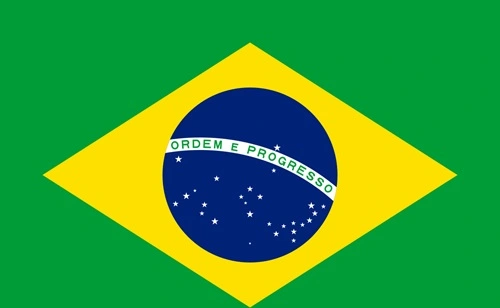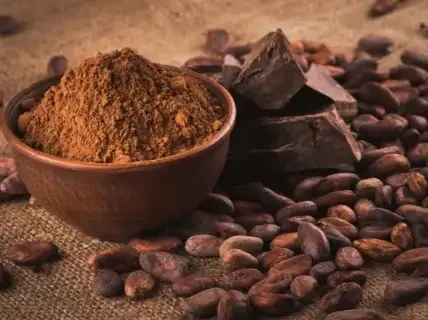The meat market is ever expanding all over the world. Not only in the countries where meat is the primary food, but also in the countries where previously vegetarian food items were part of the daily meal, meat is getting consumed and relished by a large part of the population. Be it for the variety of flavor when cooked or grilled or boiled, or for the option to cooks them in different ways, this food element is dear to millions of people around the world. Over the last 50 years, the production of meat has increased as well. The world data or 2023 shows that there has been a quadrupled increase of meat eating population since 1961. Presently the quantity of required meat each year is 357 million tons approx.. So we will be talking about the top 10 countries who have earned the reputation of being the largest meat producers in the world.
1. China
China is the largest meat-producing country in the world, with a staggering output of approximately 96.41 million metric tons, marking a 3.4% increase from the previous year. This immense production is driven by the country’s large population and increasing domestic demand for meat products, particularly pork, which accounts for a significant portion of the total. China’s government has invested heavily in modernizing its agricultural practices to meet both domestic consumption and export opportunities. Despite challenges such as disease outbreaks in livestock, China’s meat industry continues to dominate globally, making it a critical player in ensuring food security and influencing international meat trade dynamics.
2. United States:
Longtime meat producer the US follows Brazil. Its 47.53 million metric tons of production strengthen its leadership in this key sector. Several factors helped the US beef sector. First, its cattle business has large farms and good breeding. This sturdy infrastructure ensures a continuous cow supply, creating the framework for the meat sector. Second, US processors utilize cutting-edge innovation. These facilities safely and hygienically process beef, producing high-quality products. This focus on quality and hygiene has improved local consumption and meat exports. The US agricultural industry promotes technological innovation. Development has enhanced animal nutrition, veterinary care, and processing. These improvements increase productivity, yields, and global market share.
3. Brazil:
Brazilian beef rules! This South American superpower dominates meat production thanks to its huge pastures, abundant crops, and growing agricultural sector. Brazil produces 30.39 million metric tons of livestock and poultry annually. Brazil does it, but how? They make it possible through combining natural benefits with efficient farming. The country’s bright, wet climate suits livestock and feed crops. Brazil’s plentiful resources allow large-scale, efficient farming. Brazil needs more than Mother Nature. They’ve also heavily invested in innovative farming methods to boost yields and efficiency. Brazil advances agriculture via animal husbandry and feed technologies.
4. Russia
Russia’s meat production saw steady growth, driven by advancements in agricultural technology and increased domestic demand. The country produced approximately 12.5 million tonnes of meat, with poultry and pork dominating the industry. Poultry accounted for nearly half of the total output, followed by pork, which grew significantly due to government support and expanding export markets, especially in Asia. Russia has been focusing on self-sufficiency and reducing meat imports, which has led to significant investment in modernizing livestock farming.
5. India:
Its enormous population and rich culinary traditions make India a significant meat producer. The country produces 10.6 million metric tons of meat yearly for a large local market that wants buffalo, chicken, and goat meat despite limited resources and regulatory complexities. The Indian meat industry employs traditional farming practices, which is unique. Traditions in animal husbandry and cattle farming provide the country’s meat. New technology and traditional knowledge create a dynamic environment where innovation and tradition coexist. The Indian government has modernized agriculture by improving animal health, breeding, and feed production.
6. Mexico
Mexico’s meat production remained robust, with an estimated output of 8 million tonnes. The country’s meat industry is diverse, with poultry being the largest contributor, followed by beef and pork. Poultry production accounted for over half of the total meat output, supported by strong domestic consumption and growing export demand. Beef production also saw steady growth, driven by increasing exports to the United States and Asia. Mexico has been investing in improving livestock farming practices and ensuring sustainable production to meet international standards. This has solidified Mexico’s position as a key meat producer in the global market.
7. Spain:
Spain, with its vibrant culture, wonderful gastronomy, and 7.5 million metric tons of beef output, completes the top 10. Spain’s cattle farming and gastronomy support its worldwide meat market position. Spain’s meat industry is dominated by pork and beef. Professional care and attention to detail are ensured from animal husbandry to processing and product delivery. Spain’s large range of high-quality meat products for local and international markets shows its dedication to quality. Spain is recognized for its cattle farming heritage and high productivity. Families’ skills and traditions have kept animals healthy and improved meat quality. Responsible farming meets global need for ethically sourced and sustainable food.
8. Germany
Germany’s meat production was estimated at approximately 7 million tonnes, maintaining its position as a leading producer in Europe. Pork continued to dominate the industry, accounting for nearly two-thirds of the total output, reflecting the country’s strong cultural preference and export focus. Poultry and beef also contributed significantly to production, with poultry witnessing steady growth due to increasing demand for leaner protein options. Germany’s meat industry has been increasingly adopting sustainable practices, focusing on reducing emissions and improving animal welfare. The country remains a key exporter of pork and processed meat products, particularly to other EU nations and Asia.
9. Argentina:
Argentina’s vast grasslands and centuries-old ranching techniques set it apart in the cattle market. The country produces 6.3 million metric tons of high-quality, flavorful beef yearly. Argentina’s meat industry relies on extensive pasture-based farming. Free-range cattle eat grasses and legumes in lush plains. This method enhances animal care and produces leaner, healthier, tastier meat. Also, Argentina has wonderful weather. Climate is ideal for cattle breeding and development due to moderate winters and summers. Argentina produces high-quality beef that meets international standards because to its natural advantage and rancher expertise. Its long history makes ranching in Argentina successful.
10. Pakistan
Pakistan’s meat production reached approximately 5.5 million tonnes, driven by strong domestic demand and a growing export market. Beef and poultry were the primary contributors, with beef accounting for a significant share due to its cultural and dietary importance. Poultry production also witnessed steady growth, supported by investments in modern farming practices and the rising popularity of chicken-based products. Pakistan has been focusing on expanding its halal meat exports, catering to markets in the Middle East and Southeast Asia.
Conclusion
From the aforementioned information one thing is very clear. The first thing is that the fascination of the taste buds about different meat dishes is increasing fast. Secondly, these countries will have to do more to balance the supply of meat according to the requirement. This is where these countries are taking help of the most upgraded meat production and refinement technologies, making it possible to globally export a very high quality meat.

Brandon is the cheif editor and writer at WorldUnfolds.com. With a passion for storytelling and a keen editorial eye, he crafts engaging content that captivates and enlightens readers worldwide.

















